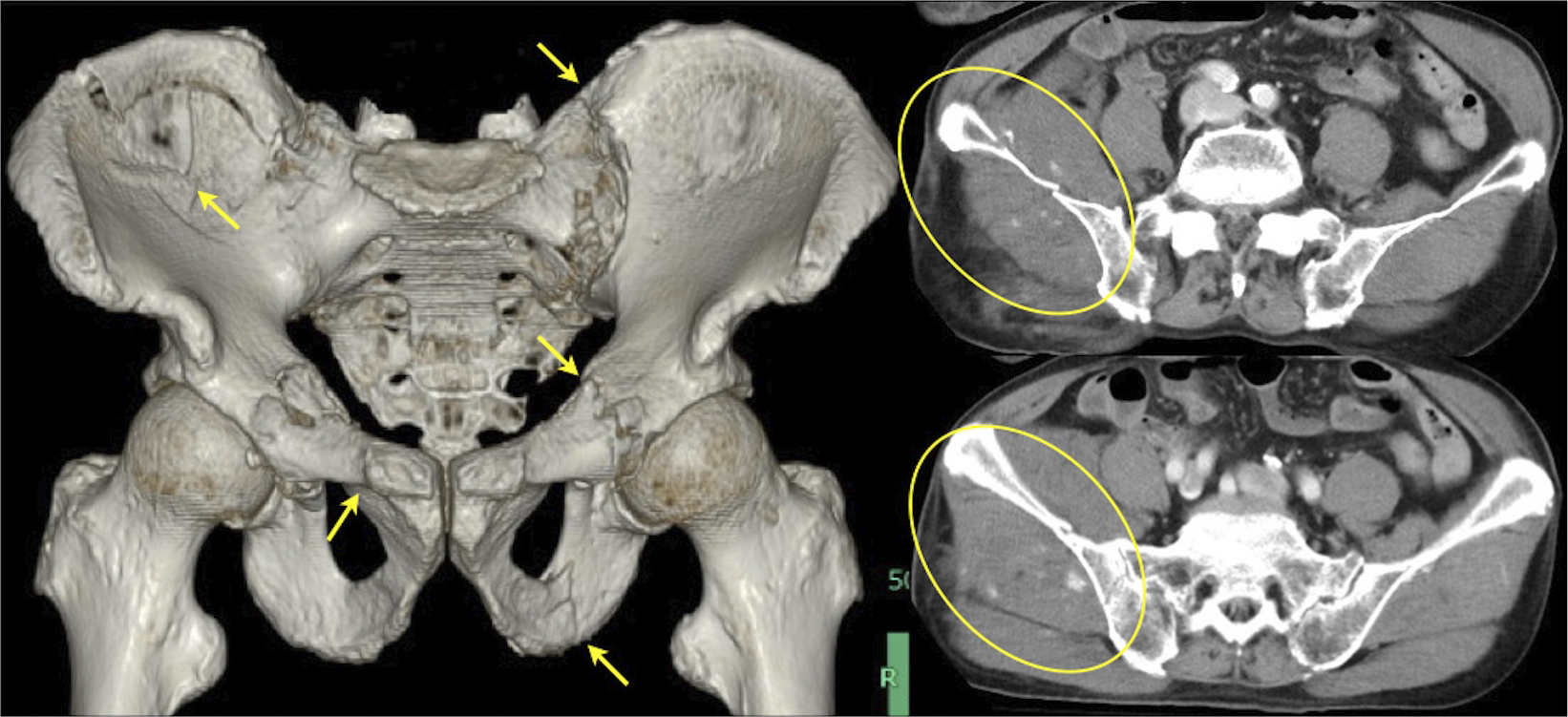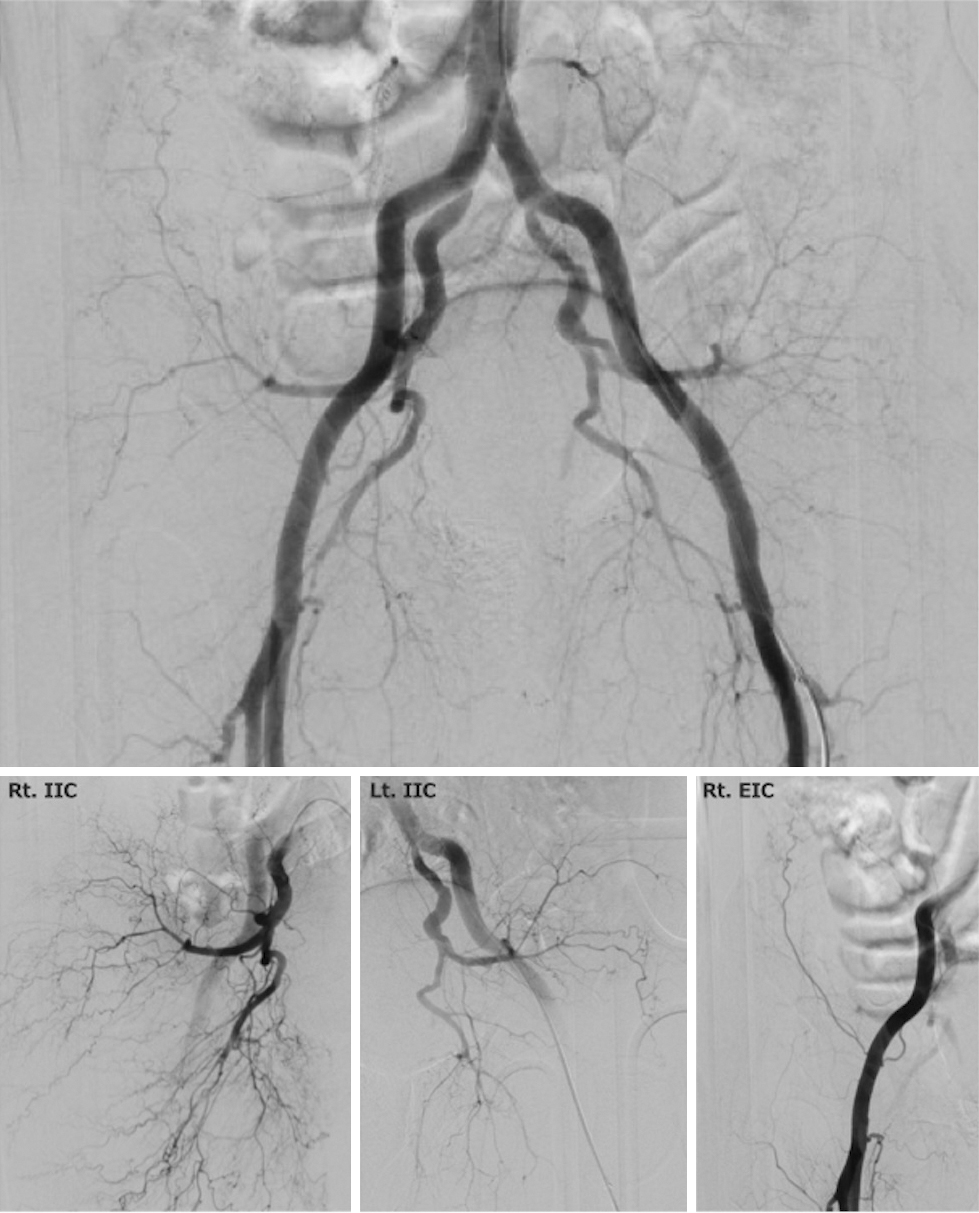Corresponding author: Junya Tsurukiri, junya99@tokyo-med.ac.jp
DOI: 10.31662/jmaj.2024-0007
Received: January 18, 2024
Accepted: February 16, 2024
Advance Publication: June 3, 2024
Published: July 16, 2024
Cite this article as:
Tsurukiri J, Nagura T, Kanemura T, Isaka K, Sano H. Visualized Efficacy of Andexanet Alfa in an Elderly Trauma Patient with an Unstable Pelvic Fracture. JMA J. 2024;7(3):438-440.
Key words: trauma, andexanet alfa, hemorrhagic shock
An 89-year-old man taking rivaroxaban, an oral, direct Factor Xa inhibitor, for arterial fibrillation was referred to our department with hemorrhagic shock after falling accidentally. Pelvic images revealed a pelvic fracture classified as LC-III according to the Young-Burgess classification with active bleeding in the pelvic muscles (Figure 1). Therefore, an intravenous injection of 400 mg was administered at a rate of 30 mg/min, followed by an infusion of 4 mg/min of andexnet alfa for 2 h. After 15 min of starting injection, emergency angiography revealed the disappearance of bleeding (Figure 2). Embolization was discontinued, and 1,960 mL of erythrocytes and 1,680 mL of fresh frozen plasma were administered within 24 h. Although andexanet alfa can reduce antifactor Xa activity during administration, its role in trauma patients has not been sufficiently studied. Given its specific mechanism of action, andexanet alfa may be advantageous for improving hemostatic performance in major trauma patients (1), (2), (3).


None
The authors would like to thank Enago (www.enago.jp) for the English language review.
Conceived and designed the experiments: TJ
Contributed to the interpretation of data: NT, KT, and IK
Approved the final version to be submitted: SH
Written informed consent was obtained from the patient for the publication of this case report and any accompanying images.
Milling TJ Jr, Middeldorp S, Xu L, et al. ANNEXA-4 Investigators. Final study report of andexanet alfa for major bleeding with factor Xa inhibitors. Circulation. 2023;147(13):1026-38.
Toyoda K, Arakawa S, Ezura M, et al. Andexanet alfa for the reversal of factor Xa inhibitor activity: prespecified subgroup analysis of the ANNEXA-4 study in Japan. J Atheroscler Thromb. 2024;31(3):201-13.
Momin JH, Candidate P, Hughes GJ. Andexanet alfa (AndexxaⓇ) for the reversal of direct oral anticoagulants. P T. 2019;44(9):530-49.